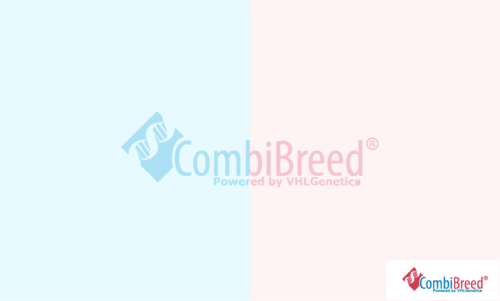E-Locus
Coat colour in dogs is controlled by a wide range of different genes working together. These genes are often referred to as ‘loci’. The Extension, or E-Locus, corresponds to the gene ‘melanocortin 1 receptor’ (MC1R), which is involved in the regulation of pigment production. Active MC1R causes a cell to “switch” from the production of phaeomelanin (yellow/red pigment) to eumelanin (black/brown pigment). Mutations affecting the E-locus often result in a lightening of the coat, from black/brown to red/yellow/white.
Inheritance
The wild-type form of the E-Locus is designated as ‘E’ (no mutation). Dogs with at least one E-allele are able to produce dark coat pigment. However, this darker coat may be further affected by other coat colour loci such as the B-Locus and D-Locus.
The recessive mutations designated as ‘e’ interrupt the function of MC1R. Dogs with two e-alleles have lighter coats. Depending on the breed, their colour may be described as red, yellow, apricot, cream or white. There are several different variants of the e-mutation: e1, e2, and e3. These variants are specific to different breeds, but any combination of two e-alleles results in the loss of dark pigment.
There are also several dominant E-locus mutations, which instead affect the distribution of dark pigment. The Grizzle mutation, Eg, is specific to the Afghan Hound and Saluki, and results in the dark-topped pattern known as Grizzle or Domino. The Melanistic Mask mutation, Em, causes a mask-like darkening of the fur around the face and muzzle as for example found in the German Shepherd. However, a Melanistic Mask may be invisible if the rest of the dog’s coat is similarly dark.
The E-locus mutations have different degrees of dominance over each other. Em is dominant over all other variants, followed by Eg and E.
Relevant tests
- H632
- H734
- H791
- H783
- H784
- H818
